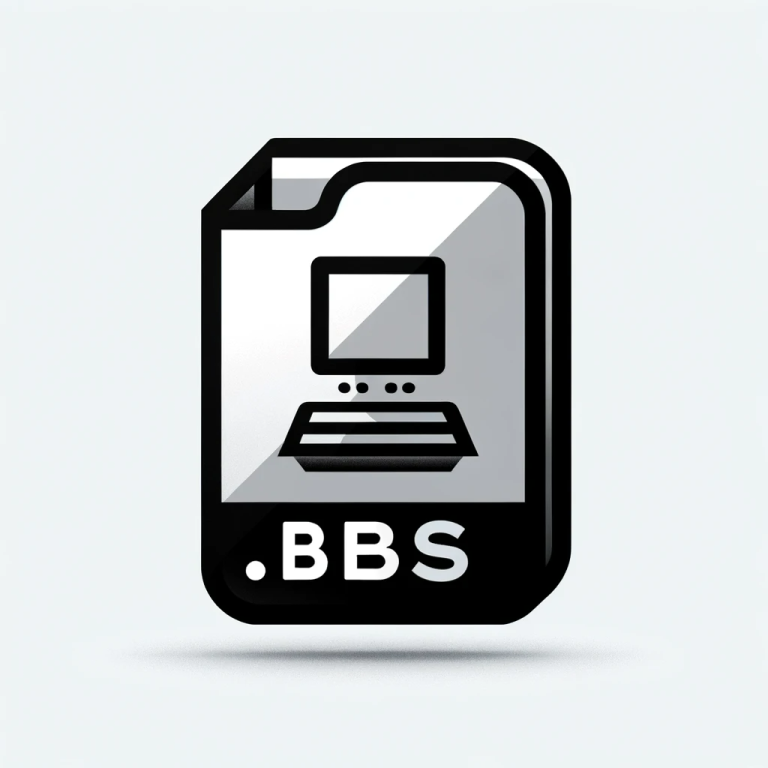.BBS File Extension

Bulletin Board System Text
| Developer | N/A |
| Popularity | |
| Category | Text Files |
| Format | .BBS |
| Cross Platform | Update Soon |
What is an BBS file?
Files with the .BBS file extension are typically associated with Bulletin Board System (BBS) software.
.BBS systems were prevalent in the early days of the internet, primarily serving as online communication platforms where users could interact via text-based forums, message boards, and file downloads.
The .BBS files contain information related to BBS configuration, message archives, user profiles, and more.
More Information.
.BBS files were used to define the structure and content of BBS forums and message boards. Sysops (system operators) would create and modify these files to customize the BBS for their community of users.
The usage of .BBS files expanded to encompass other BBS-related information, such as user profiles, configuration settings, and more.
Origin Of This File.
The .BBS file format has its roots in the BBS era, which began in the late 1970s and peaked in popularity during the 1980s and 1990s.
BBS systems were created to allow users to dial in using modems to exchange messages, files, and play online games in a pre-internet era.
.BBS files were used to store various BBS-related data, including the structure and content of bulletin boards, user preferences, and posts.
File Structure Technical Specification.
.BBS files are typically plain text files encoded in ASCII. They consist of sections containing metadata, forum structure, message content, user account data, configuration settings, and sometimes references to file attachments.
The specific structure can vary depending on the BBS software used but follows a basic hierarchical format.
How to Convert the File?
Windows:
- Determine the desired format for conversion. .BBS files may contain different types of data, so choose an appropriate output format.
- Use a text editor or a specialized conversion tool that supports .BBS file content.
- Open the .BBS file in the chosen tool.
- Select and copy the content you wish to convert.
- Paste the copied content into a new file in the desired format (e.g., plain text, HTML, or CSV).
- Save the new file with the appropriate file extension for the chosen format.
Linux:
- Open a terminal.
- Use a text editor or command-line tools to extract and convert the content of the .BBS file to the desired format.
- Save the converted content to a new file with the appropriate file extension.
Mac:
- Use a text editor or command-line tools on your Mac to open the .BBS file.
- Copy and paste the content you want to convert into a new file.
- Save the new file with the appropriate file extension for the desired format.
Android:
- Install a text editor or file conversion app from the Google Play Store.
- Open the .BBS file using the text editor or conversion app.
- Copy and paste the content you wish to convert into a new document.
- Save the new document with the appropriate file extension for the desired format.
iOS:
- Download a text editor or file conversion app from the App Store.
- Open the .BBS file using the text editor or conversion app.
- Copy and paste the content you want to convert into a new document.
- Save the new document with the appropriate file extension for the desired format.
Advantages And Disadvantages.
Advantages:
- Customization: .BBS files allow sysops to customize the look and feel of their BBS.
- Text-Based: BBS systems and .BBS files are lightweight and can be accessed even with low-speed internet connections.
- Nostalgia: .BBS files evoke nostalgia for the early days of online communities.
Disadvantages:
- Outdated: BBS systems are largely obsolete, and .BBS files have limited relevance in the modern internet era.
- Lack of Features: Compared to modern social media and online platforms, BBS systems offer limited functionality.
- Compatibility: Finding software to open and edit .BBS files can be challenging due to their outdated nature.
How to Open BBS?
Open In Windows
- Download and install a Telnet client like “PuTTY” from the internet.
- Run the Telnet client.
- Type the BBS server’s address or domain name.
- Choose the Telnet protocol if prompted.
- Click “Connect” or press Enter.
- Follow the on-screen instructions to access and navigate the BBS.
Open In Linux
- Open a terminal on your Linux computer.
- Type
telnet BBS-address(replace “BBS-address” with the actual address). - Press Enter.
- Follow the on-screen prompts to access and interact with the BBS.
Open In MAC
- Open the “Terminal” app on your Mac.
- Type
telnet BBS-address(replace “BBS-address” with the actual address). - Press Enter.
- Follow the on-screen instructions to access and navigate the BBS.
Open In Android
- Install a Telnet or SSH client app from the Google Play Store (e.g., “JuiceSSH” or “Termux”).
- Open the app.
- Enter the BBS server’s address.
- Choose Telnet or SSH as the protocol.
- Tap “Connect.”
- Follow the on-screen instructions to access and use the BBS.
Open In IOS
- Install a Telnet or SSH client app from the App Store (e.g., “Termius” or “Blink Shell”).
- Launch the app.
- Enter the BBS server’s address.
- Select Telnet or SSH as the protocol.
- Tap “Connect.”
- Follow the on-screen instructions to access and interact with the BBS.
Open in Others
- Check if there’s a Telnet or SSH client app available for your device.
- Install the app if you find one.
- Enter the BBS server’s address in the app.
- Choose the Telnet or SSH protocol as required.
- Follow the on-screen instructions to explore the BBS. Keep in mind that the process might differ based on your device and the specific app you use.













